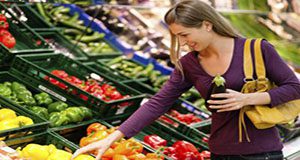The Nutrition Facts label is a great tool for consumers who are trying to make better food choices; it was created in 1993 to help members of the public learn more about the nutritional value of their food. Revisions to the label’s design were released in 2016, marking the first major change to the label in over 20 years. This 3-page document, written by Samantha Buddemeyer and Gail P. A. Kauwell, discusses the new features of the Nutrition Facts label. Published by the UF/IFAS Department of Food Science and Human Nutrition, January 2018.
http://edis.ifas.ufl.edu/fs300
Tag: Food Labels
Evaluating Certified Coffee Programs (WEC306/UW351)
In recent years, there has been a growing interest among consumers to buy products that follow strict standards in their production process and that also are healthy and safe. In the case of coffee, people in the United States are not only interested in the quality and origin of coffee, but many are also concerned about the social, economic, and environmental aspects of coffee production. Coffee is taking the lead in developing standards to address these concerns. This 6-page fact sheet explains the certification process and describe the various certification programs and what they mean. Written by Gloria M. Lentijo and Mark Hostetler, and published by the UF Department of Wildlife Ecology and Conservation, February 2011.
http://edis.ifas.ufl.edu/uw351
Label Reading for Better Eating (FCS1049/HE548)
Reading the nutrition facts label helps you know what is in the food you are eating. The label is also helpful for making healthy food choices—you can compare nutrition information for different types of foods, or the same foods from different brands, before you buy. This 2-page fact sheet was written by Glenda L. Warren and Claudia Peñuela, and published by the UF Department of Family Youth and Community Sciences, February 2011.
http://edis.ifas.ufl.edu/he548
AN207/AN207 Country of Origin Labeling (COOL)
AN207, a 3-page fact sheet by Chad Carr and Larry Eubanks, describes the COOL labeling regulations for agricultural commodities, including the interim final rule released by AMS on July 28,2008. Includes references. Published by the UF Department of Animal Science, August 2008.
http://edis.ifas.ufl.edu/AN207
HS1146/HS397 Understanding the ‘USDA Organic’ Label
HS-1146, a 6-page illustrated fact sheet by Danielle D. Treadwell and Mickie E. Swisher, briefly outlines the history of the USDAs National Organic Program (NOP), summarizes for consumers the benefits of government regulation of organic food products, and provides a guide for interpreting labels on products with organic ingredients. Includes references. Published by the UF Department of Horticultural Sciences, August 2008.
http://edis.ifas.ufl.edu/HS397
